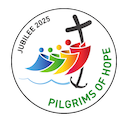History Curriculum Map Cycle A
History Curriculum Map Cycle B
History Narrative
History progression from EYFS to year 1
The study of history can bring pupils into a rich dialogue with the past and with the traditions of historical enquiry. Through history, pupils come to understand their place in the world, and in the long story of human development. The study of history challenges pupils to make sense of the striking similarities and vast differences in human experiences across time and place. Pupils learn how historians and others construct accounts about the past. In response to our mixed-aged classes, our History Curriculum is implemented on a two-yearly programme (Cycle A and Cycle B). This ensures complete curriculum coverage for our pupils. As children progress throughout the school, they develop their substantive and disciplinary knowledge, skills and understanding through a range of topics and historical enquiry. By Year 6, all children will have followed our Curriculum Narrative pathway.
Progression through the Threshold Concepts
Within history, there are 4 key elements, which combined, ensure that our pupils can access a deep understanding of the subject. Pupils make progress in history by developing their knowledge about the past (this knowledge is often described as ‘substantive knowledge’) and their knowledge about how historians investigate the past, and how they construct historical claims, arguments and accounts (often described as ‘disciplinary knowledge’). The threshold concepts relate to different aspects of disciplinary knowledge, and substantive knowledge is vital to all of them.
1) Chronology
Developing pupils’ chronological understanding underpins the sequencing of the history curriculum, as indicated above. Pupils develop their understanding of the past as a concept in EYFS, by placing people and events in a historical framework in Key Stage 1. This historical framework becomes more comprehensive at Key Stage 2 where pupils develop a chronologically secure knowledge and understanding of the broad characteristics and features of British, local and world history from the Stone Age to beyond 1066.
2) Thinking like a Historian
Progressing from understanding themselves and their families at EYFS, at Key Stage 1 pupils start to ask questions about historical events and people. Through this, pupils learn about and understand key features of events in the past. Consequently, they are also then able to compare aspects of life in different historical periods through significant individuals in the past. This evolves at Key Stage 2 into pupils developing their understanding of the disciplinary concepts of cause, consequence, change and continuity, similarity and difference, and historical significance. Pupils learn how to explain how or why events happen, their consequences, the extent, nature and pace of historical change, similarities and differences between people, groups, experiences or places, and why historical events and individuals are significant.
3) Investigating the Past
This Threshold Concept is concerned with how historians investigate the past. Through EYFS and Key Stage 1 pupils will understand some of the ways in which we find out about the past and identify different ways it is represented. As pupils progress to Key Stage 2 they will develop an understanding of how interpretations of the past are constructed, making inferences about the past through analysis of contemporary historical sources and conducting historical enquiry about the reliability of sources. Pupils will identify the difference between a source and an interpretation, and recognise how historians use sources as evidence to construct, challenge or test claims about the past. While making inferences about the past from sources, pupils will use their contextual knowledge to support inferences and analyse and evaluate the reliability/usefulness of sources based on their provenance and the pupils’ knowledge of the context. Pupils will also learn the idea of
misconceptions about sources and evidence.
4) Communicating History
This Threshold Concept is concerned with how to write about the past. This includes using historical terms and vocabulary; in EYFS pupils will use common words and phrases to describe the past and the passing of time. In Key Stage 1 pupils will begin to use a wide range of vocabulary of everyday historical terms and be able to select sources to recall events of the past. Through Key Stage 2 pupils will select historical terms appropriately, including tier 2 and tier 3 vocabulary, as well as use abstract terms. Pupils will ask and answer questions and construct arguments and reach conclusions.
In EYFS, history is included within “Understanding of the World”, where pupils learn about history through the Early Learning Goal ‘Past and Present’. Pupils are encouraged to talk about members of their immediate family and community, name and describe people who are familiar to them, comment on images of familiar situations in the past and compare and contrast characters from stories including figures from the past.
This helps pupils to develop awareness of the past, which is then built upon in Key Stage 1 when pupils’ understanding of the past starts to develop into an awareness of a chronological framework in which people and events can be placed. They do this through looking at changes within and beyond living memory such as Toys in the Past, and through investigating the lives of significant Women in History. Pupils’ chronological framework is further enhanced when they study key events such as the Great Fire of London, building upon their understanding of how we find out about the past by asking and answering questions. Pupils also build upon their studies of Women in History by Comparing Queens which allows them to develop the skill of identifying similarities and differences between different periods to an even greater degree.
Key Stage 2 is sequenced chronologically, to help pupils build a rich understanding of change and continuity in British, local and world history. Pupils study local and British history, and a history of the wider world in parallel. Starting with a study of the Stone Age in Lower Key Stage 2, pupils study how Britain has developed through the Bronze Age and Iron Age, leading on to the impact that the Roman Empire had on the island, and changes under the Anglo-Saxons and Vikings in Upper Key Stage 2. This allows pupils to understand the history of these islands as a coherent, chronological narrative. Throughout Key Stage 2 pupils also study ancient civilisations and aspects of the wider world in chronological order starting with Ancient Egypt, moving on to Ancient Greece, which links with the Roman Empire. Following the Anglo-Saxons, pupils go on to study Early Islamic Civilisation to help them contrast different civilisations from the same period. Pupils then complete thematic studies of Conflict through Time and Crime and Punishment through Time which allows them to establish clear narratives across the periods studied, and note connections, contrasts and trends over time. They will complete extended pieces of writing demonstrating their understanding, using subject specific vocabulary. This curriculum prepares them with high quality skills and knowledge needed for Key Stage 3 and beyond.

